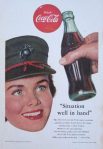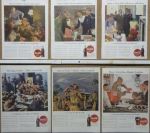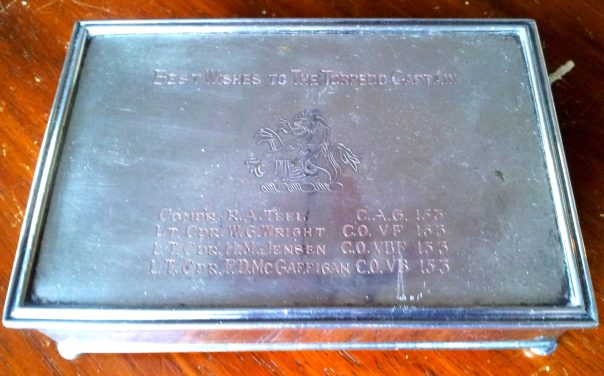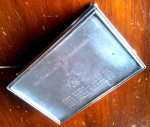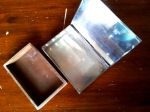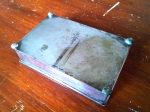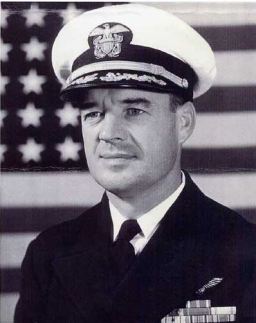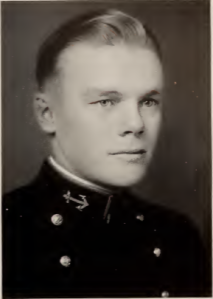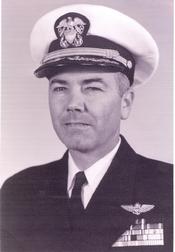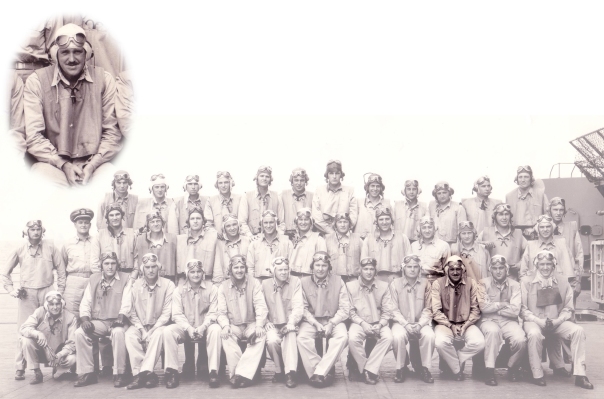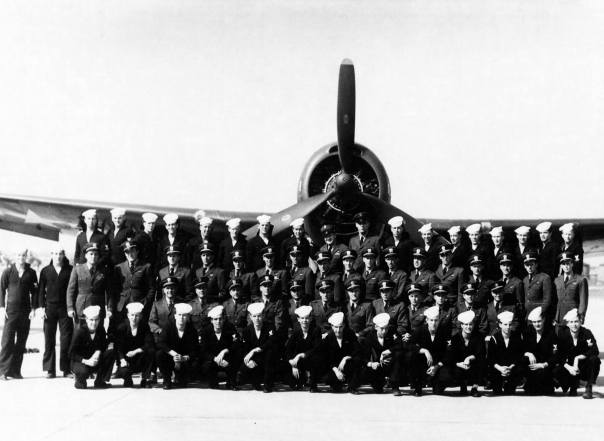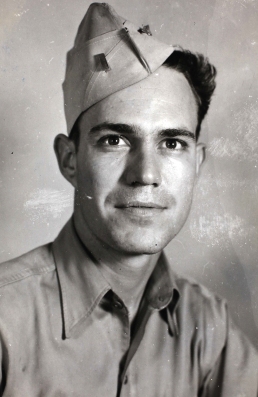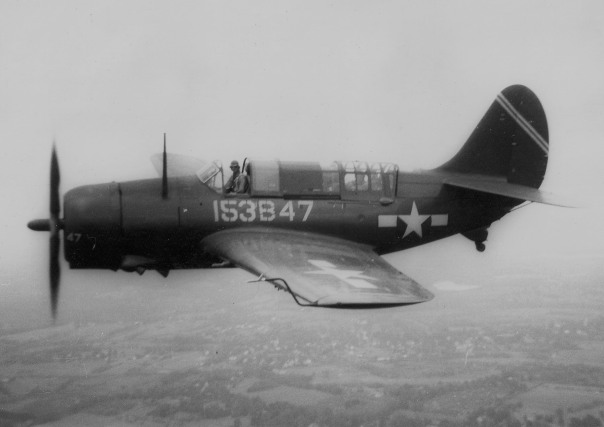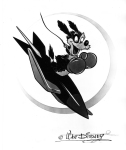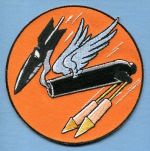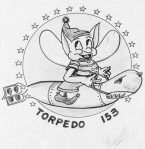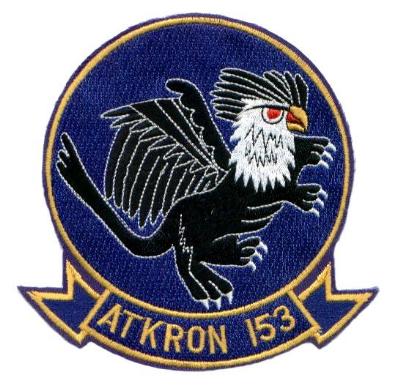Category Archives: Military Art
Focused on Niche Areas of Collecting: USS Washington
What is the difference between a collector and a hoarder? It is a fair question that I often ask myself, especially when I am at a decision point before pulling the trigger on an acquisition. Some folks may decide to move forward with a purchase based upon a single element while others employ a matrix of factors that guide their choices. As many of these factors are subjective and are unique to the individual, it is impossible for one person to answer a the aforementioned question. Psychology professor Randy O. Frost (of Smith College) wrote a fantastic piece, “When Collecting Becomes Hoarding” that is rather insightful in guiding collectors in avoiding the entrapments that lead to the devastating condition of hoarding.
My (simple to suggest yet difficult to adhere to) advice to those who are interested in collecting militaria can be summed up with just one word: FOCUS! To some, focusing on a national military is focus enough. However, I can only imagine what their homes or storage areas (of someone who collects US Militaria) must look like as they gather pieces from four branches of the armed forces. In my estimation, the level of focus that makes the most sense is one that aligns with several criteria. For me these are:
- What story am I trying to uncover and convey with my collection and does the piece align with it?
- Does artifact meet with my primary interest?
- Does the piece meet my budget constraints?
- Do I have the space to preserve and protect the artifact from further decay and damage or to display and enjoy it?
My collecting has a few, very specific focuses and perhaps the most broad of those resides with baseball militaria. Thankfully, this category is extremely limited in terms of available artifacts which, if I pursued even 50 percent of what arrives on the market, I would still be very limited in what actually landed into my home. Being a Navy veteran, most of my collection touches naval history in some manner. Within this arena, I also pursue artifacts related to a few specific ships (the two that I served aboard and the one that my grandfather commissioned and served aboard during WWII). In total, there are about a half-dozen U.S. Navy warships from which I possess related artifacts.

A cabinet card photograph of the USS Washington that has been hand-toned (colorized) shows the white-and-buff color-scheme of the day (before the Navy transitioned to haze gray). This image has some moisture damage on the right side.

This real photo postcard of the USS Washington (taken while she lies at anchor off of Seattle, her future namesake) is one of my favorite photos of the ship.
One of those warships that I collect is the USS Washington – which is comprised of a few vessels beginning with the Tennessee class Armored Cruiser (ACR-11) that was commissioned in 1906. I also collect items from the three vessels that have carried the name (BB-47, BB-56 and SSN-787) bringing the total pool from which to draw collecting interest (with this ship) to four. Well, let me make a slight correction; The armored cruiser Washington experienced a reclassification and corresponding name-change due to the rapidly advancing technology and the Navy’s ship-naming policies. In 1916, the ship was renamed USS Seattle in order to free up Washington to be used for a new class and in ship-of-the-line-category. Just 22 days following congressional approval for four Colorado-class battleships (coincidentally, the USS Washington would be the only one of the three to not be finished due to terms of the 1922 Washington Naval Treaty).
As I have been able to secure a modest array of pieces that are associated with the earlier USS Washington/USS Seattle (see: Sound Timing and Patience Pays Off and Naval Heritage Commemorated in Silver), the artifacts that arrive to the market for this ship are scarce. In addition to a few homefront pieces and the cruise book, I have managed to assemble a small collection of original vintage photographs (including CDVs, RPPCs and a cabinet card) from this vessel.
It isn’t often that pieces surface onto the market from (or are associated with pr attributed to) a ship that effectively existed for a decade more than a century ago. Artifacts that actually came from a ship can be difficult to prove in the absence of rock solid provenance. Depending upon the time-period, the ship’s name is seldom, if at all, emblazoned onto a equipment or crew-used items aside from wardroom china or silver service elements. Enlisted uniforms (flat hat tallies before WWII and uniform shoulder UIC patches from the 1950s-on), depending on the era, can bear the ship’s name. In my collection are pieces that fit into a different category: ship-associated. These artifacts range from folk/trench art to sweetheart or family (homefront) pieces that serve as reminders of the sailor’s service rather than being derived from the ship itself.

Distracted by the fantastic blue and gold colors along with the name of the ship, I initially believed the pillow dated to the early decades of the 20th century (source: eBay image).
One such piece, associated with one of the ships that I focus my collecting upon, was listed at auction several months ago and caught my attention for several reasons. Brightly colored and adorned with felt-applique lettering and naval adornments, a homefront pillow that bore some similarities to another navy piece that was already in my collection (see: Dream of Me When You Sleep: Homefront Military Pillow Covers). As I reviewed the listing, I began to focus on the similarities shared between my 1918 Navy pillow and this one that was being listed with the initial thought that it might pre-date 1916 (when the USS Washington ACR-11 was reclassified and re-named). I set my bid amount and waited for the auction close as the date that the pillow was made was quite secondary to my desire to have a piece associated with the Washington, regardless of the era or specific hull.
- The stitching of the lettering and the design of the interlocking “USS” hinted that the pillow might have been associated to the USS Washington (ACR-11) hull (source: eBay image).
- More focused on the stitching, I overlooked the CPO insignia design (source: eBay image).

The only original image of the WWII battleship, USS Washington (BB-56) that I have in my collection, shows the bow of the most-decorated non-carrier of WWII slicing through the slightly rough seas of the Pacific. Her two forward mounts of her main battery appear almost diminutive in the absence of objects of scale.
The pillow arrived a week after my successful auction bid secured win, and I spent some time carefully and gently cleaning the artifact as the felt fabric, though not brittle, could easily tear. The backside of the pillow shows considerable fading having been exposed to a constant light source for years (perhaps placed on the back of a sofa near a window). My assumption of the date of the pillow continued as I overlooked a very obvious indication of the true age. It wasn’t until I began to truly examine the pillow while making descriptive notes (just prior to authoring this article) that I finally recognized the most obvious indication of the artifact’s age. On the bottom corner is a felt applique representation of a chief petty officer’s cap device. The “U.S.N.” lettering was near-entirely horizontally aligned adhering to the pattern used by the device’s WWII design.
Despite my “discovery” of the USS Washington pillow’s actual age, it is a rather unique piece for the WWII-era considering that most of the WWII homefront pieces were silk-screened imagery on satin fabric.
- Though this CPO device is very early (second pattern dating to 1910), had the pillow been associated to this period, the CPO device would be more aligned with this style.
- This CPO device was made and used during the early years of WWII. By the war’s end, the “N” was no longer slanted as seen here.
- This CPO emblem affixed to the bottom corner of the pillows face is modeled after the then current design of the hat device worn by chief petty officers. The most glaring difference between a WWI and WWII device is the lettering and the orientation of the chain.
Regardless of the age, the Washington piece fits nicely into this narrow niche of my collecting while keeping me selective with what is added to my collection. Finding the balance in collecting, as with life, helps maintain my sanity, keeps the hobby enjoyable and helps me to avoid cluttering my home and making life miserable for my family.
Jungle Art: Painted WWII Pith Helmets

A close-up of th 6th Marine Division insignia painted onto a USMC veteran’s helmet. This veteran served in one of the bloodiest battles of WWII, Okinawa (source: eBay image).
In a recent online auction, an amazing example of a veteran-painted pith helmet sold for less than $150. Had this helmet been a period correct M1 helmet, there is no telling how much attention it would have drawn from collectors or what incredible amount of money it would have fetched.
- Showing the left side of the 1945 Okinawa pith (source: eBay image).
- Showing the painted-on shoulder sleeve insignia of the 6th Marine Division (source: eBay image).
- Showing the rear of the pith with the painted “USMC” (source: eBay image).
Hawley Products Company, one of the manufacturers of M1 helmet liners, made these fiberboard headgear “sun” helmets for use as protection from the intense sunlight and torrential downpours of the South Pacific tropical islands. Due to their lightweight design and construction, the term ‘helmet’ hardly seems applicable when compared to the beefy, bulky nature of the steel pot.

Here is a very nice example of a painted pith helmet with the Marine’s name stenciled across the bill (source: eBay image).
Piths were issued to all branches and were available in two colors or tones. Green was predominantly issued to naval personnel while khaki or light brown went to army and army air forces people. Marines could be seen wearing either color as they were issued whatever was available within the supply system or they adapted to the limited stores-issue and found creative ways to <em>requisition</em> (I use this term quite loosely as some Marines were rather resourceful in cutting through the red tape of the supply system) them.
As with any creative service member deployed away from loved ones and home, artistic expression tended to be revealed on available mediums. Piths, not meant for combat, were viable canvases for these artists to modify with their own personal embellishments. Wearers <em>tended</em> to be rear echelon service-members rather than front-line combatants, but some did don the helmet near the fight. Sometimes the fight came to them while they were engaged in other in-the-rear activities.

Though not as nicely embellished as the Okinawa pith, this Guadalcanal helmet would be a great addition to any collection (source: eBay image).
If you’re seeking to add a visually stunning helmet to your collection but can’t afford to splurge for the painted steel pot, these pith will certainly add diversity and originality to any display. With patience and diligence applied to your searching techniques or saved searches, you will find the perfect addition.
.
Paper and Postcards – Telling a More Complete Military Story

USS Quincy (CA-39) photographed from a Japanese cruiser during the Battle of Savo Island, off Guadalcanal, 9 August 1942. Quincy, seen here burning and illuminated by Japanese searchlights, was sunk in this action. To the left of the image, USS Vincennes (CA-44) can be seen burning in the distance (image source: Naval History and Heritage Command | NH 50346).
Although I am not much of a ephemera collector or fancy myself a philatelist, there are certain aspects of these areas of collecting that interest me. More specifically, if there are ephemera or postal items that connect with or align to my focus areas, I try to grab them in an effort to augment my collection.
People might see the term ephemera and wonder what it means. What sort of item can be characterized or classified as such? In order to answer that question, at least for myself, I proceeded to search the internet. One of the first items within the search results was the organization that is dedicated to these collectors, the Ephemera Society of America, who characterizes it this way:
“Ephemera includes a broad range of minor (and sometimes major) everyday documents intended for one-time or short-term use. The 402-page Encyclopedia of Ephemera lists more than 500 categories from bookmarks to fruit wrappers to posters to theater tickets.”
For this article, the specific categories (presented among the group’s list of 26) that I am touching on are photographs, postcards, and brochures. In some cases, a few of my items (such as real photo postcards) span multiple categories.
In 2009, I published my first book (and hopefully, many more to come though much time has passed since then without a subsequent offering) about the naval warships that bore the name USS Vincennes. In the process of assembling my collection of artifacts that would be used to provide the readers with some visual references, I realized that I had amassed a significant group of items relating to the CG-49. I also realized that though I had a smattering of items, I was really lacking in anything associated with, at the very least, the two WWII cruisers. This realization catapulted me into active militaria collecting that was very focused.
Since I started writing about militaria, I have authored articles (see below) that include a smattering of some of the items from my own USS Vincennes collection.
- Subtle History – Finding a Unique Naval Militaria Piece
- Collecting U.S. Navy Uniform Ship Identifiers
- Remember Me When You Sleep… Sweetheart Pillow Covers
- Spark Your Collection: Military-Themed Zippos
- A Mere Symbolic Plank: A Navy Ship Plankowner’s Perception
The items documented in these posts represent a growing and well-rounded and ever-increasing group of Vincennes-related militaria and would make for a nice arrangement or display. With my ephemera and philatelic additions, this collection (and any subsequent displays I might set up) takes on a more vibrant and colorful appearance.
The philatelic pieces (covers) from the CA-44 cruiser all date from the late 1930s and provide a documented timeline of the ship’s early years of service. The cover from the CL-64 documents the launching of the second Vincennes cruiser in 1943. Combining the ephemera (photographs) and philatelic pieces, my collection has depth and dimension.

The Japanese produced postcards depiction of the Savo Island battle is not too far from the reality (see the Japanese photo of the Quincy burning and foundering – above) of what took place overnight, August 8-9, 1942.
One of the more interesting artifacts in my collection is a postcard that published during the war. When I saw the postcard listed for sale, I noted that it was being sold by someone located in Japan and the text of the listing was lacking details but the title and the artwork were enough to motivate me to submit a bid. The postcard’s face featured an artistic depiction of three American cruisers, wrecked and burning among shell-geysers (as the Japanese ships pressed their attack upon the wounded American cruisers) that, while meant to serve as propaganda, was actually close to what truly happened. I asked a friend translate the Japanese text which revealed the title of the image as, “Night (Attack) Warfare at Tulagi.” The caption states that the painting was displayed at the second Great East Asia War Art Exhibition, which was held in 1943.

The reverse of the Savo Island battle postcard. I have been meaning to re-send a higher resolution scan my friend so that it too, can be translated.
The ships that are depicted in the image are (unknown to the Imperial Japanese Navy officials at the time) the USS Quincy, USS Astoria (CA-34) and the USS Vincennes. All were left disabled and burning after a night engagement by Admiral Gunichi Mikawa’s task force at Savo Island. This painting was a propaganda piece that was more fact than inflated story-telling as the attack was the largest surface defeat suffered by the U.S. Navy during WWII.
I was quite surprised to find such a piece existed and was elated to obtain it for my collection.
Researching After You Buy – Sometimes it is the Better Option
I’ve said it so many times in the past: it is paramount to making wise purchases that collectors research an item prior to handing over hard-earned finances to make a purchase. However, there are occasions within militaria collecting where the collector is stumped by what he or she might be looking at, yet still feel compelled to pull the trigger on a deal to acquire it.
Recently, a very dear friend and fellow collector presented me one of his most recent acquisitions and wanted to get my input as to the markings and what they might indicate. He was stumped by some of the heraldry and details but there were other engraved elements that showed the piece to be from World War I.

The dates of 1914, 15, 16 and 17 automatically rule out this matchbox as being a U.S. trench art piece.
I spent several minutes examining what appeared to be a trench art matchbox. Clearly, the item shown is constructed from brass and was handmade. The brass plates were rolled out and soldered together to form an oblong can-shape with another piece cut and soldered into place at the top. A piece of wood was shaped and fastened to comprise the case’s bottom, and adhered with some sort of clear glue or shellac. Judging from the length of the box, the brass was an unrolled and flattened small arms casings, a very common resource used in trench art making.

What does the crescent and “winged Z” indicate? The hand-tooling is quite ornate and aesthetically pleasing. I’d say that this was a solid score for my friend.
On one side, the maker tooled a pattern and left a smooth shield motif with what appears to be a monogram of the initials, “MB.” At the surrounding corners of the shield are “1914”,” 15”, “16” and “17” which clearly indicates the first few years of World War I.
Etched into the opposing side of the matchbox is what appears to be a crescent or “C” with the opening pointed upward. Inside the crescent are two wings – one, at the bottom, pointing to the left with the top one pointing to the right. Connecting the two wing tips is a heavy line running diagonally, right to left from the top to the bottom. All three pieces appear to form the letter “Z.” Superimposed over the diagonal line is a small numeral two. Over the top of this “winged Z” is appears the year, “1917.” To the top right is a star with radiant beams extending outward to all directions providing a backdrop design. The top panel is etched simply etched with “Champagne”, surrounded by tooled pattern.

The matchbox top has “Champagne” engraved. To me, this clearly indicates that the owner spent a good portion of WWI serving in these battles.
I knew that the piece was from WWI and was potentially French or British in origin (it could even be German) due to the dates of the piece, as the U.S. didn’t enter the war until 1917. Could the crescent indicate Arabic or Islamic participation? Could it be connected to the French Foreign Legion? Does “Champagne” refer to the battles that were fought in 1914, 1915, 1916 and 1917?
Due to the sheer beauty of this piece, it has proven to be a very wise investment my friend made (at least in my opinion) regardless of his lack of certainty about it. This matchbox will be a fun and interesting research project. Perhaps one of you recognizes the emblems or has any ideas? I’d love to hear your thoughts!













